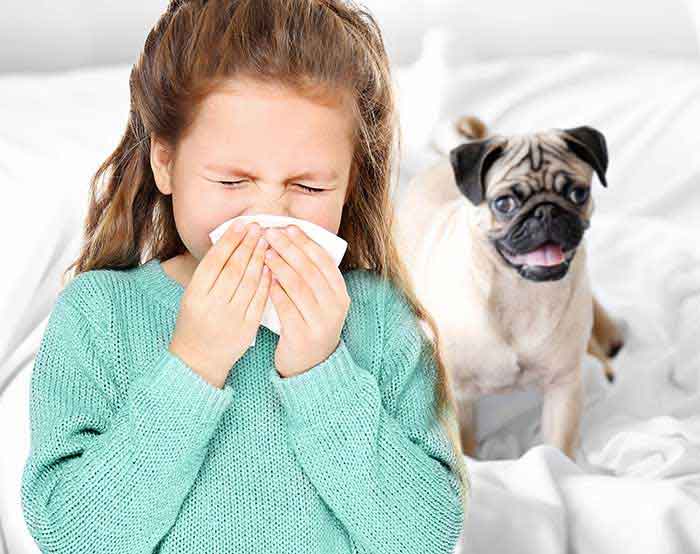Pet Dander in the Home Can Cause Allergic Reactions
It is common for people who already suffer from allergies or asthma to develop allergies to their pet’s hair and dander. Around three in ten allergy sufferers in the United States will have allergic reactions to dogs and cats’ hair and dander. Cat allergies are about twice as common as dog allergies.
People who suffer from pet allergies have oversensitive immune systems. The immune system wrongly identifies saliva, urine and pet dander as harmful substances (allergen). As a result, it produces antibodies to protect them, creating an allergic reaction.
It is a common misconception that the pet’s hair is the cause of allergic symptoms. Furthermore, an allergy caused by pets originates from the protein in their dander (dead skin cells), saliva or urine. For instance, dog allergen is found in the dander, hair and saliva while cat allergen is found on the skin and fur.

Although, pet hair is not an allergen it can be a carrier of other airborne allergens such as dust, pollen, mould and house dust mites. These allergens collect on our furniture, walls, surfaces and cloths and will not lose their strength for a long time, often remaining at high levels for several months.
Furthermore, will find pet allergens in places that are not even home to any pets, such as schools, workplaces and public spaces. As the allergens can, for instance, be transferred on clothing and shoes from pet owners.
Symptoms of Pet Allergy
Symptoms can be mild to severe depending on the individual
- Sneezing
- Coughing
- Breathing Difficulties
- Wheeze
- Rash on the skin
- Itchy, red, watery eyes
- Eczema
- Anaphylaxis
- Swelling and itching of the membranes
- Stuffy nose
300 million people worldwide are living with asthma, and it is predicted to rise to 400 million by 2025 (WHO)
Top Tips to Prevent Pet Allergy
- Using a combination of practical methods you can significantly reduce symptoms caused by allergies to pet dander in the home.
- As we spend anywhere up to a third of our time in the bedroom, it is advisable to keep all pets out. In addition, clean the bedroom frequently and thoroughly.
- Keep your pets off the sofa. Leather sofas are preferable as you can clean these regularly. Pet dander also collects on soft furnishings such as pillows and throws. Clean these regularly and at high temperatures to remove allergens.
- Finally, washing your pet weekly and brushing your pet outside can reduce airborne allergens.
For more information on allergy and asthma triggers within the home. Refer to our article about “How mould in the home can affect your health”











